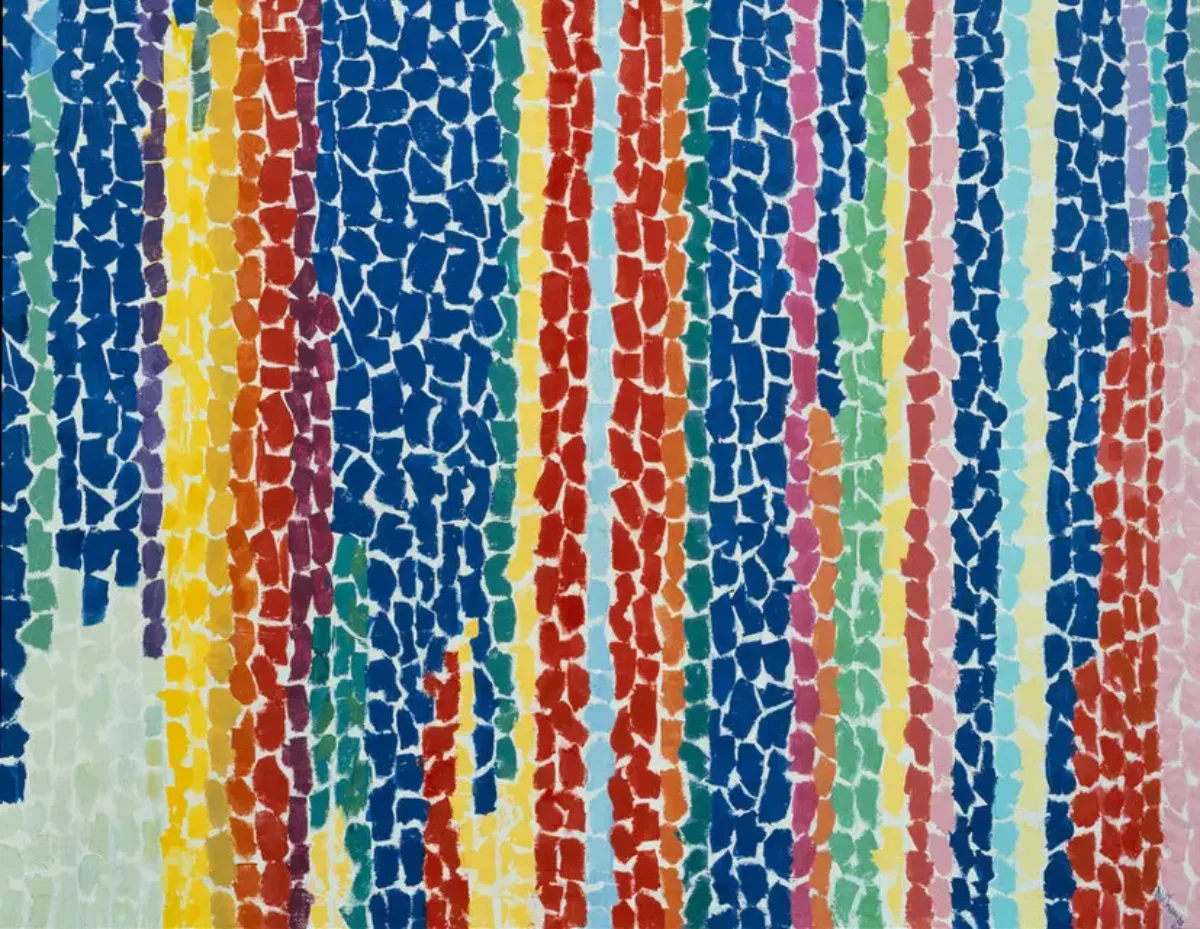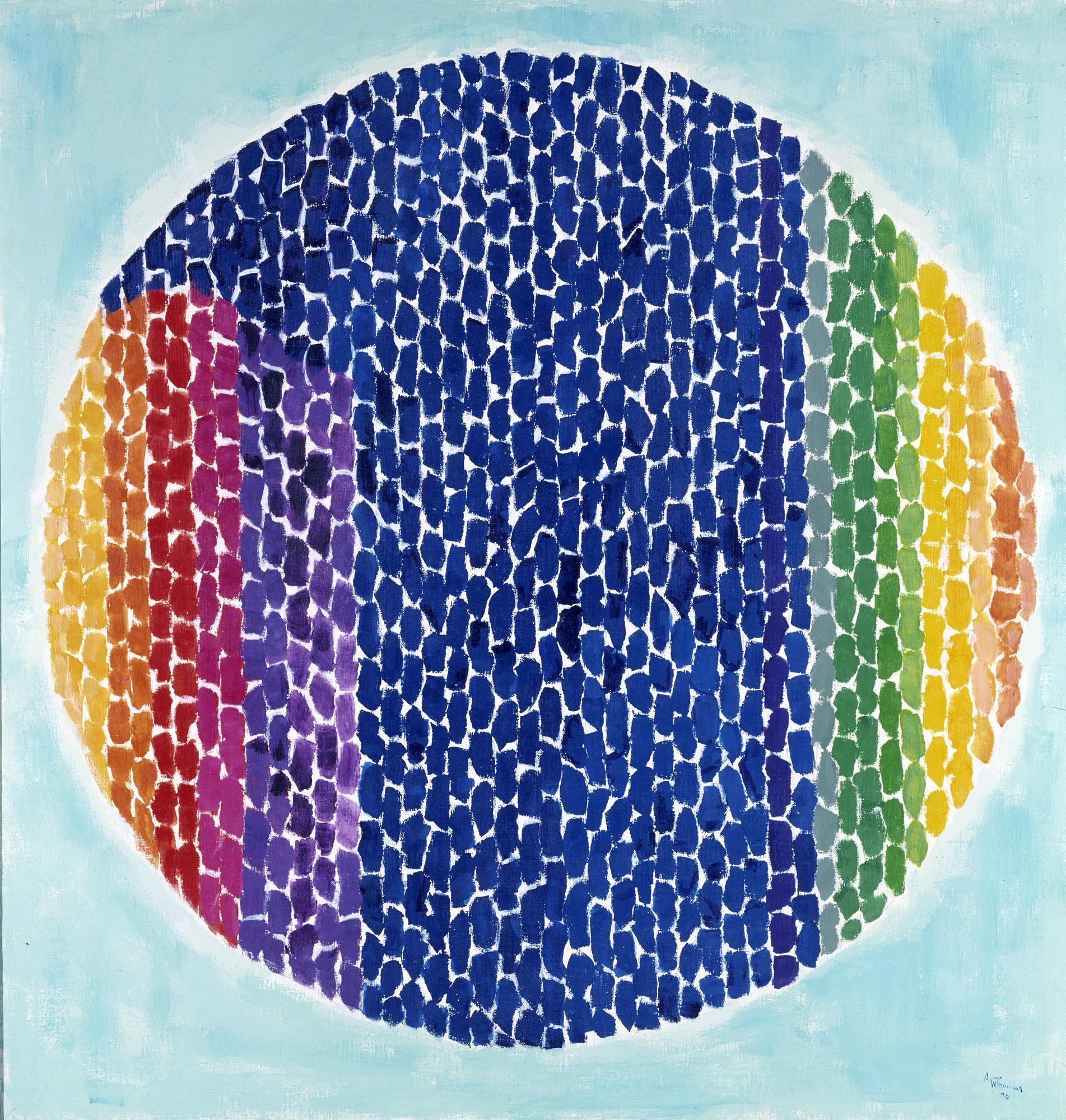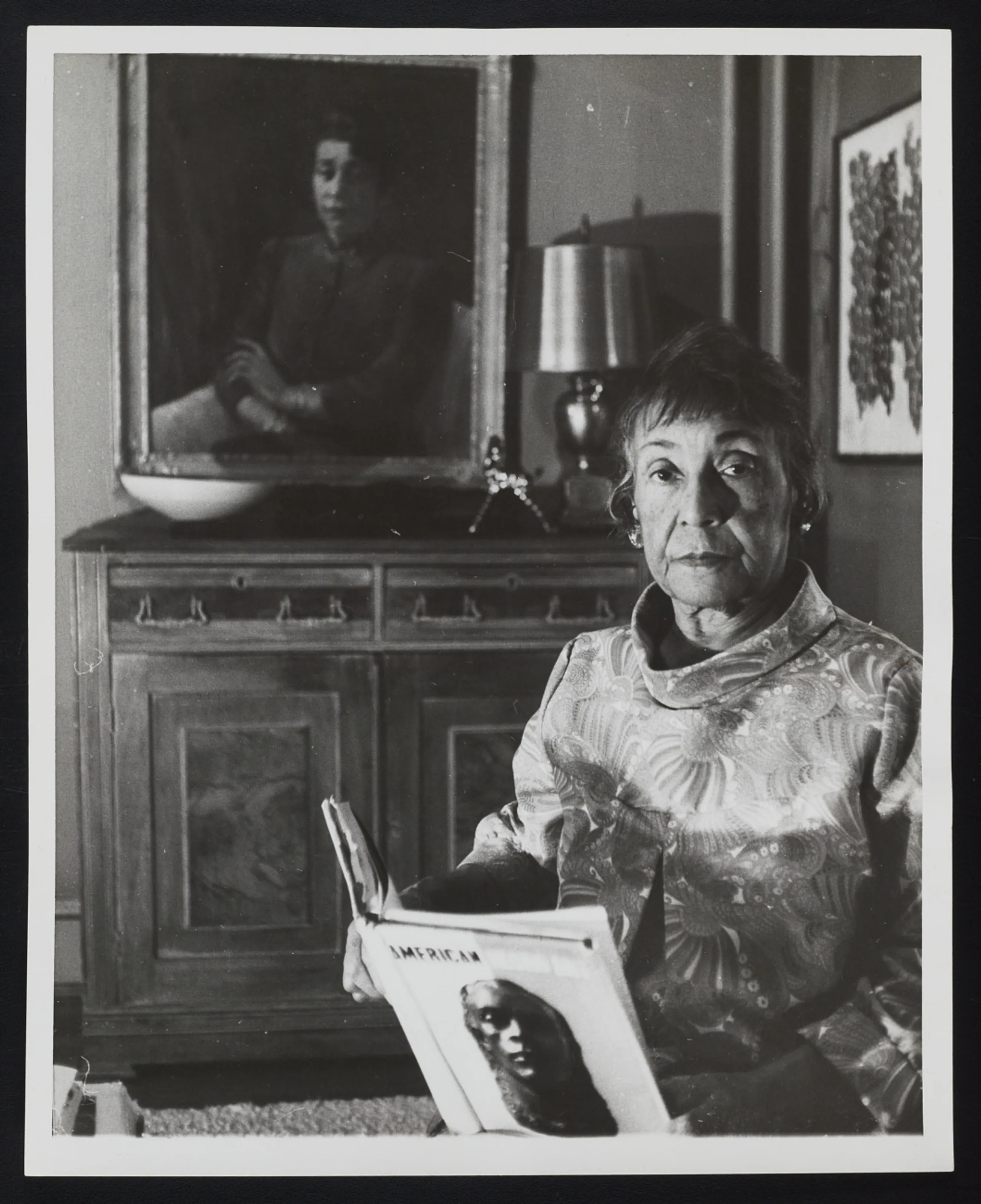Alma Thomas

Alma Woodsey Thomas was born in 1891 in Columbus, Georgia, and moved with her family to Washington, D.C. in 1907 to escape racial violence. Though she dreamed of being an architect, she became the first fine arts graduate of Howard University in 1924 and spent 35 years teaching art to Black students in segregated schools before fully devoting herself to painting.

After retiring at age 69, Thomas embraced abstraction, developing a style of radiant dabs and stripes of color inspired by nature, music, and outer space. She called on influences from Byzantine mosaics, color theory, and the Washington Color School — but always made the form her own.

Her Earth and Space series are full of poetic light: fields of concentric circles, vibrant brushstrokes, and compositions that dance with joy. While many artists tackled the turmoil of the 1960s directly, Thomas believed in beauty’s quiet power: 'I’ve never bothered painting the ugly things in life… I wanted something beautiful that you could sit down and look at. And then, the paintings change you.'

In 1972, Thomas became the first Black woman to have a solo exhibition at the Whitney Museum. She was over 80 years old. Her paintings have since hung in the White House and the Met, a triumph unimaginable during her youth, when Black Americans couldn’t even enter most museums. She didn’t just paint beauty—she became part of its history.

?
How did Alma Thomas' background as a teacher shape her approach to art?
Why do you think Thomas chose to focus on beauty and color instead of injustice and conflict?
How did Thomas' age and identity as a Black woman challenge traditional expectations in the art world?
What elements in her work reflect her fascination with nature and space?
In what ways does her work intersect with or diverge from other members of the Washington Color School?
How might Thomas’s art serve as a form of resistance even if it doesn’t directly depict protest?
What does her success later in life tell us about perseverance and recognition in creative fields?
Dig Deeper
A documentary overview of Alma Thomas’s life and legacy, featuring her unique use of color and her late rise to prominence as a groundbreaking abstract artist.
An engaging, teen-friendly look at why Alma Thomas' joyful, color-rich paintings deserve a spot in the canon of modern art.
Discover more

Jackson Pollock
Pollock didn’t paint what he saw, he painted what he felt. His work is a reminder that sometimes, breaking the rules is the only way to find your voice. The floor became his canvas, his body the brush, and emotion the medium. He left behind more than paintings, he left a blueprint for fearless creation.

Vincent van Gogh
Van Gogh taught the world that art doesn’t have to be perfect to be powerful. He painted with emotion, lived with passion, and used color like a language all its own. His story reminds us that even when the world doesn’t see your worth right away, your vision can still change it forever.

Henri Matisse
Matisse showed us that creativity is about more than talent, it’s about courage. He wasn’t afraid to color outside the lines, break the rules, and start over when life demanded it. His art invites us to see the world as a place of bold beauty, deep feeling, and endless possibility.
Further Reading
Stay curious!
